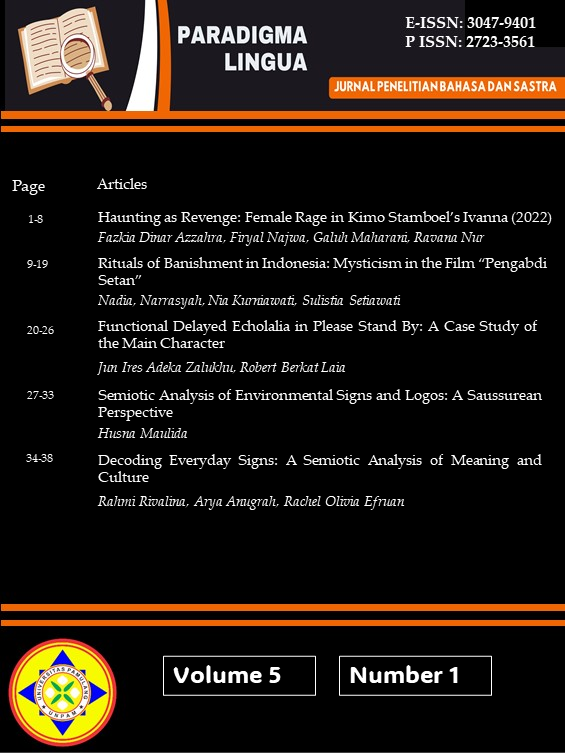Decoding Everyday Signs: A Semiotic Analysis of Meaning and Culture
Keywords:
Semiotics, Signifier, Signified, Cultural analysis, CommunicationAbstract
This research explores the field of semiotics, concentrating on how signs and symbols are used to convey and interpret meaning in everyday contexts. Drawing on foundational concepts from Ferdinand de Saussure, supplemented by Roland Barthes’ cultural semiotics and Umberto Eco’s interpretative approaches, the study investigates the intricate ways in which signs operate within linguistic and cultural frameworks. Utilizing a descriptive qualitative methodology, the research gathers data from real-world environments such as streets, bus terminals, and shopping centers to identify the practical and cultural dimensions of signs. Saussure’s theory is employed to analyze the relationship between the signifier (form) and the signified (concept), revealing that signs are not merely tools for functional communication but are deeply embedded with cultural and societal significance. The findings illustrate how these signs go beyond their immediate purpose, reflecting broader societal values, norms, and contextual subtleties. By emphasizing the dual layers of functionality and cultural symbolism, the study highlights semiotics as a crucial lens for deciphering the complex messages embedded in everyday life. This underscores the power of semiotic analysis to uncover the nuanced interplay between communication, culture, and societal structures, offering deeper insights into how meaning is constructed and understood.
References
Barthes, R. (1957). Mythologies. Éditions du Seuil.
Chandler, D. (2007). Semiotics: The Basics. Routledge.
Eco, U. (1976). A Theory of Semiotics. Indiana University Press.
Saussure, F. de. (1916). Course in General Linguistics (W. Baskin, Trans.). McGraw-Hill.
Vallverdu, J., & Marine, S. (2023). Cultural codes in environmental communication: A semiotic analysis. International Journal of Semiotics Studies, 12(3), 45-60.
Downloads
Published
Issue
Section
License
Authors who publish with this journal agree to the following terms:
- Authors retain copyright and grant the journal right of first publication with the work simultaneously licensed under a Creative Commons Attribution License that allows others to share the work with an acknowledgement of the work's authorship and initial publication in this journal.
- Authors are able to enter into separate, additional contractual arrangements for the non-exclusive distribution of the journal's published version of the work (e.g., post it to an institutional repository or publish it in a book), with an acknowledgement of its initial publication in this journal.
- Authors are permitted and encouraged to post their work online (e.g., in institutional repositories or on their website) prior to and during the submission process, as it can lead to productive exchanges, as well as earlier and greater citation of published work (See The Effect of Open Access).
Paradigma Lingua have CC-BY-SA or an equivalent license as the optimal license for the publication, distribution, use, and reuse of scholarly work.
In developing strategy and setting priorities, Paradigma Lingua recognize that free access is better than priced access, libre access is better than free access, and libre under CC-BY-SA or the equivalent is better than libre under more restrictive open licenses. We should achieve what we can when we can. We should not delay achieving free in order to achieve libre, and we should not stop with free when we can achieve libre.


